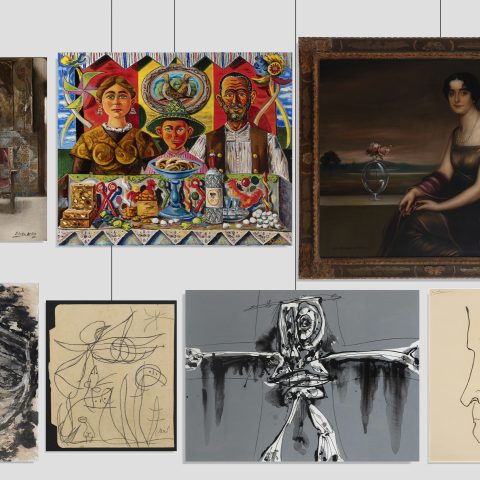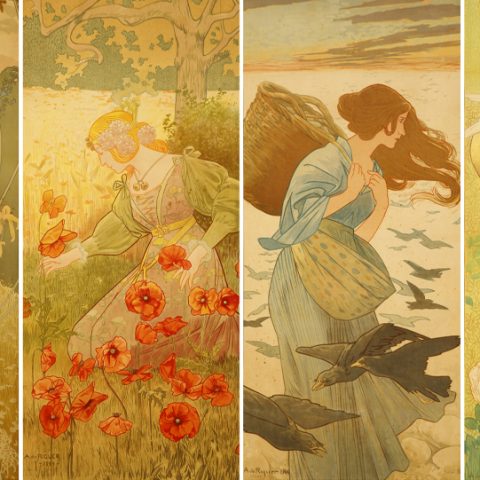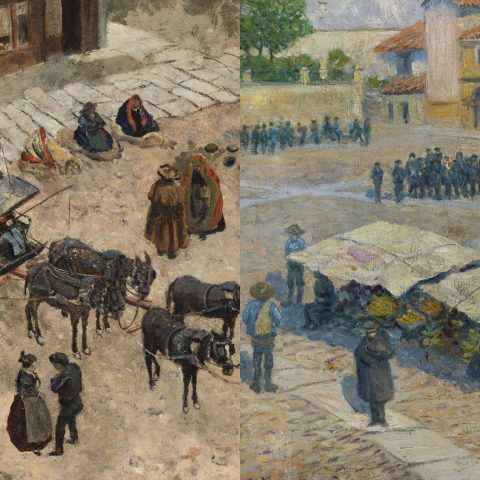The avant-garde and contemporary art have championed the concept of creative freedom in art, but impressionism was the aesthetic current that originated a break with the precepts of the academy and laid the foundations of an artistic revolution based on color and light. Captive of their own era, the Impressionist painters accepted the vertiginousness of their time, elevating painting and detaching it from a completely anachronistic and institutional vision.
During the 19th century, France experienced a strong industrialization and urban development that brought great changes to society. This fact caused the artists to look beyond their workshops, drawing inspiration from both the urban landscape and a more idyllic concept represented by life in the countryside. In addition, industrialization favored the development of new materials and techniques that allowed artists to go outdoors and capture scenes with greater speed and spontaneity. Technical advances increased the interest in the study of light, rediscovering the landscape through a sensory vision that favored the creation of multiple versions of the same scene through which they could capture the atmospheric phenomena that occurred throughout the day.
On December 18, Setdart unveils for the first time on the market a canvas whose enigmatic and uncertain authorship brings together all those plastic values that made the impressionist movement an authentic artistic rebellion.
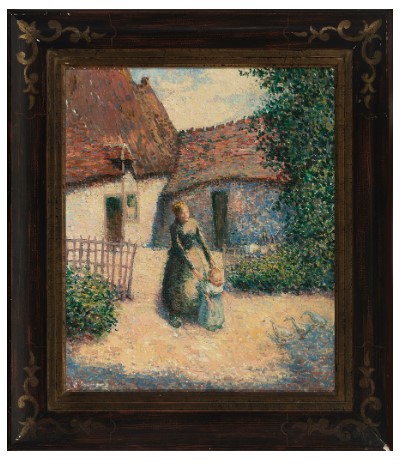
The history behind it, as well as the results of the analyses carried out, allow us to place the work in the chronological framework corresponding to the Impressionist movement. In this sense, research into the traceability of the piece takes us to 1921, the year in which our work was transferred from France to Spain by inheritance of Don Fernando de Orleans, great-grandson of the last king of France.
On the other hand, the pigment analysis reveals a priming layer that corresponds to the one used by Pissarro, Monet or Manet, as well as the pigments chosen by the author, among which zinc white or chrome yellow stand out. The application of color is structured as is usual in pointillist heritage painting, in the form of superimpositions of pictorial layers or brushstrokes applied very quickly, without allowing the previous layers to dry. Finally, the abrasion in the lower left corner suggests that the piece may have been originally signed.
However, what is really exciting about this case is its compositional and thematic closeness to the famous painting “La Bergère rentrant des moutons”, created by Pissarro in 1886. Famous for being the protagonist of one of the most relevant litigations of the 20th century. The history of “La Bergère rentrant des moutons” dates back to the 1940s when Gaston Lévy, a French collector, sold the painting to Théophile Bader, founder of the Groupe Galeries. It later became part of Yvonne Meyer’s collection. However, despite securing his collection when Nazi forces attacked Jewish families in France and confiscated their works of art, the German financial investigation agency in Paris eventually seized the Meyer collection.
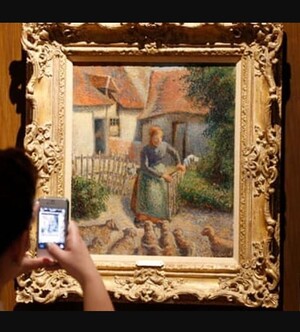
In 1956, the David Findlay Galleries in New York acquired La Bergère through an Amsterdam art dealer. A year later it was sold to collector Clara Weitzenhoffer, whose bequest was donated to the Fred Jones Jr. Museum of Art. from Oaklahoma University, initiating litigation over the ownership of the work that continues to this day.
To this day, and despite the notorious legend surrounding “La Bergère rentrant des moutons”, no similar version created by Pissarro is known. However, the work we present here, with its obvious links to the methods, materials and style of Camille Pissarro, as well as its thematic connection with the work we refer to, do not allow us to reject irrefutably the possibility that we are dealing with a piece by the hand of the impressionist master. In fact, the combination of technical, historical and stylistic elements reinforces the hypothesis that this work represents not only a valuable testimony of its time and of the Impressionist movement, but could also be an authentic contribution to Pissarro’s artistic legacy.




